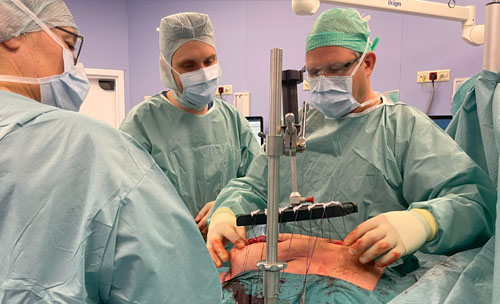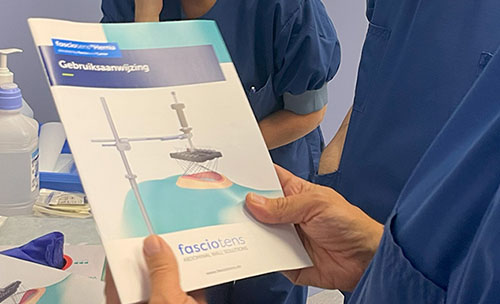fasciotens®Pediatric Standardize the treatment of congenital abdominal wall defects
Abdominal wall closure of congenital and acquired abdominal wall defects in newborns and infants remains to be a surgical challenge. To date, there is no general accepted standard for therapy. In cases where primary closure of the defect is not possible, different (often self-made) techniques are applied, which do not follow a common standard.
Learn more about how to treat these challenging defects in a standardized and reproducible way.
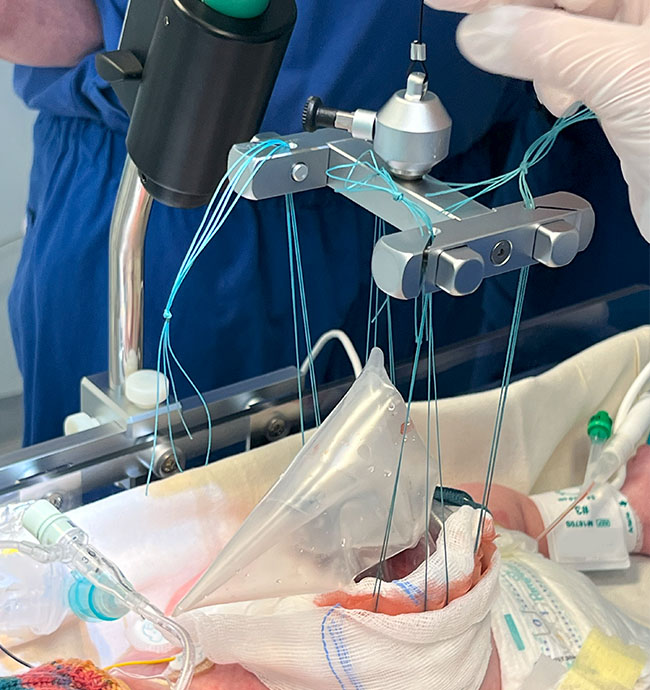
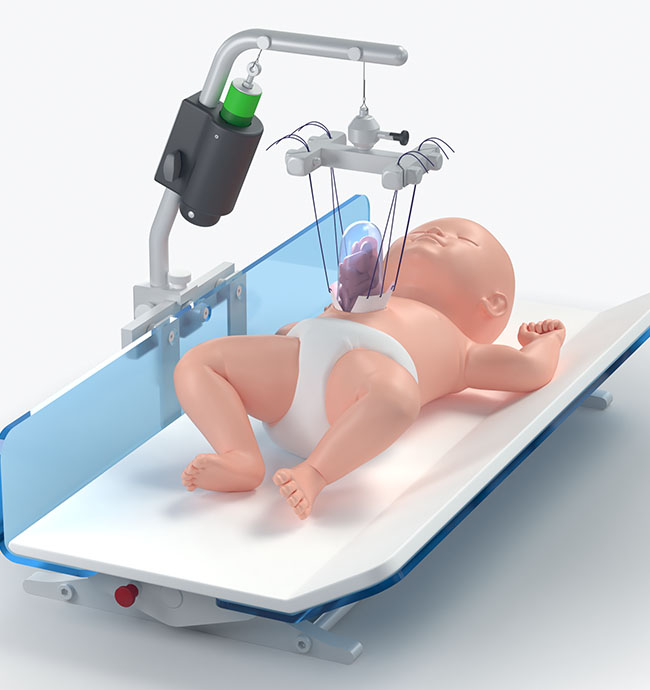
Improve treatment outcomes for the youngest
Why do pediatric surgeons choose the fasciotens® solution?
Increase intra-abdominal volume
By applying quantifiable, vertical traction to the lateral abdominal wall, myofascial stretching is achieved relatively easily in newborns. By following this staged closure procedure, it's possible to create enough space in the abdominal cavity to relocate the prolapsing organs.
Quantifiable traction
The fasciotens® system is clinically established and supports standarization of abdominal wall treatment in newborns. Quantifiable and reproducible traction is applied to the lateral abdominal wall made visible by the integrated scale to adapt to different patient conditions.
Easy integration into daily ICU routines
The device was designed to be used hassle-free in daily care. It can be applied and removed within seconds in case of emergency or patient care. Throrough training of the ICU team is a key step during our onboarding process.
How does it work?
Standardized fascial traction for congenital abdominal wall defects in newborns and infants
The fasciotens®Pediatric device applies controlled and quantifiable vertical traction to the abdominal wall.
Watch the video to get more insight.
Support
Learn more about fasciotens®Pediatric
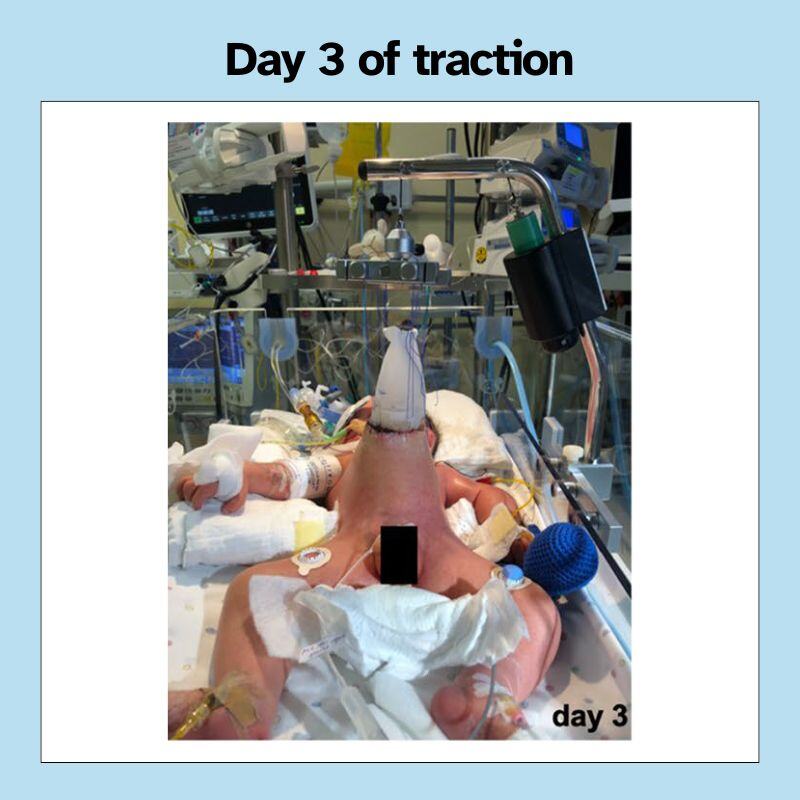
Publication
Use of a new vertical traction device for early traction-assisted staged closure of congenital abdominal wall defects: a prospective series of 16 patients
Pediatric Surgery International 40, 172 (2024)
First multi-centre study to explore feasibility and safety of fasciotens®Pediatric device in giant Omphaloceles (GOC) and complex Gastroschisis (GS). The authors conclude that the device enabled an early tension-free closure of the defects.
- Traction forces btw. 500g - 1.000g (<50% of the patient's weight) applied
- Abdominal wall closure after a median time of 7 days (GOC) / 5 days (GS)
- No hernia formation after mean follow-up of 12 months
- No device-related adverse events
Frequently Asked Questions
Is it save to use fasciotens®Pediatric?
fasciotens®Pediatric is a CE certified and approved device to use in newborns and infants. It meets all requirements of the high standards of the European Medical Device Regulation (MDR). Well-known university hospitals like University Hospital Bonn, Germany are using the device regularly.
Why are no publications available for the device?
As a small company, we don't have the funds of super big corporations who can sponsor studies with massive financial support for fast results. We therefore rely on the medical community to come up with publications.
Currently, a multi-centric study is ongoing and seems to be ready for publication in 2024.
How can I integrate the device into daily routines?
Your team will be trained thoroughly by our fasciotens® experts. They can perform all their daily tasks as usual.
What's the procedure for my first application?
Just reach out to your local fasciotens partner or directly to us. One of our surgeons or fasciotens® specialists will discuss your case with you and together we agree on whether fasciotens is suitable. We will make sure that you will have a fasciotens® expert at your side during the treatment.
Surgeons' opinions on fasciotens®Pediatric
"fasciotens®Pediatric is a method that applies controlled traction to the abdominal wall. The initial results of using the device in the treatment of abdominal wall malformations in newborns are very promising."

Prof. Udo Rolle
Head of Pediatric Surgery, University Hospital Frankfurt
"We have used the device 5 times in the treatment of congenital abdominal wall defects: It is surprising how much gain in length of the fascia can be achieved by applying one cycle of intraoperative traction. Also with prolonged use over several days, the increase of volume of the abdominal cavity is enormous."

Dr. Daniel Svoboda
Senior Consultant, University Hospital Mannheim
"The pressure relief on the abdominal organs was crucial for our 3-month-old patient after multiple abdominal compartment syndromes caused by a metastasised neuroblastoma with massive hepatomegalie: We were able continue with the chemotherapy continuously despite the ongoing expansion of the metastatic liver. After several weeks of open abdomen treatment with fasciotens, "being tumour free" was celebrated at Christmas!"

Dr. Manuel Besendörfer
Head of Pediatric Surgery, University Hospital Erlangen
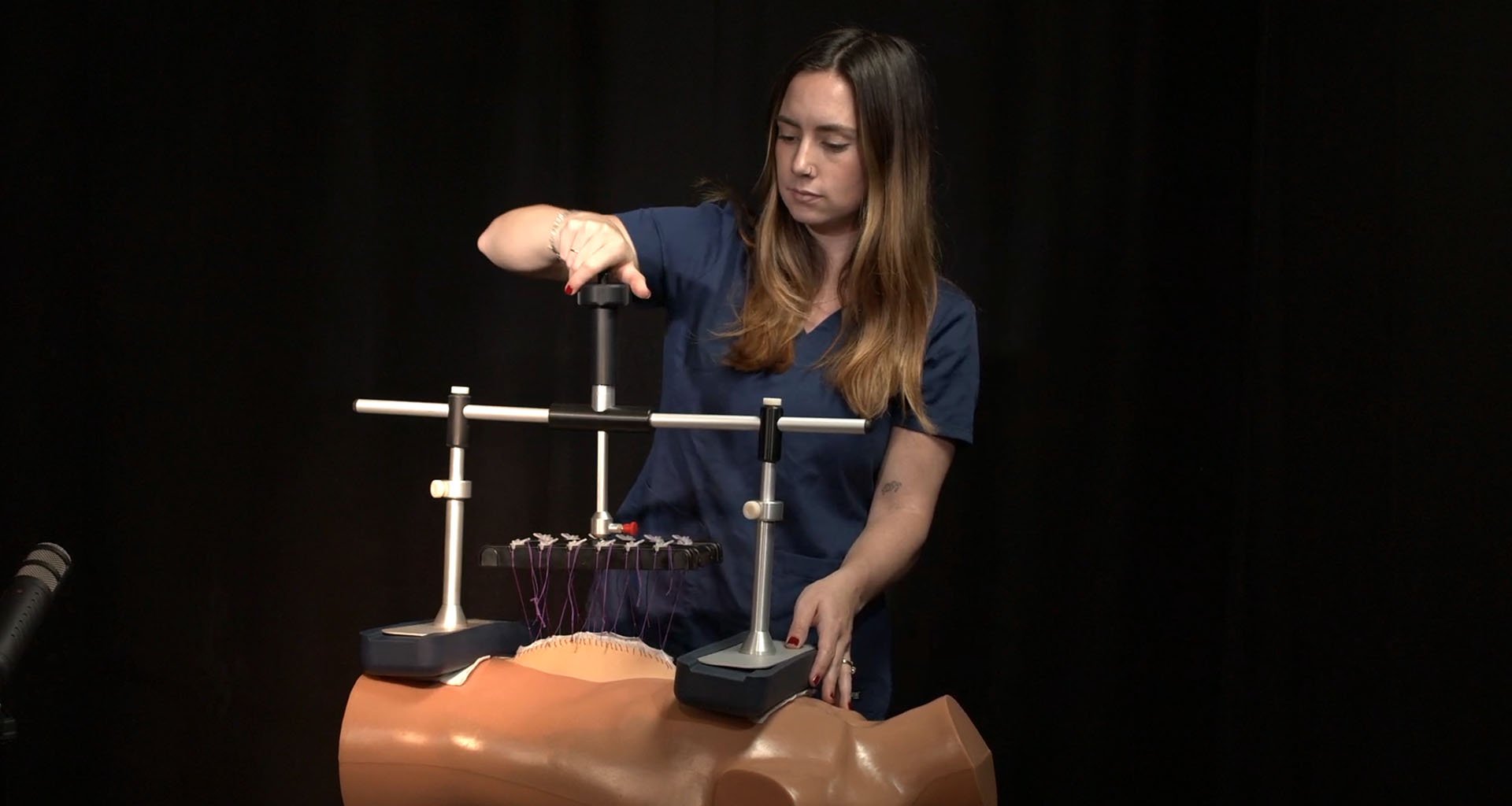
Watch the e-learning course about fasciotens®Pediatric
Join this course for a thorough introduction to applying the fasciotens®Pediatric device during surgery. The course includes a 3-minute set-up tutorial which you and your team can easily re-watch before each application.
Sources & references
- erst veröffentlichen, wenn wir eine Publikation haben

